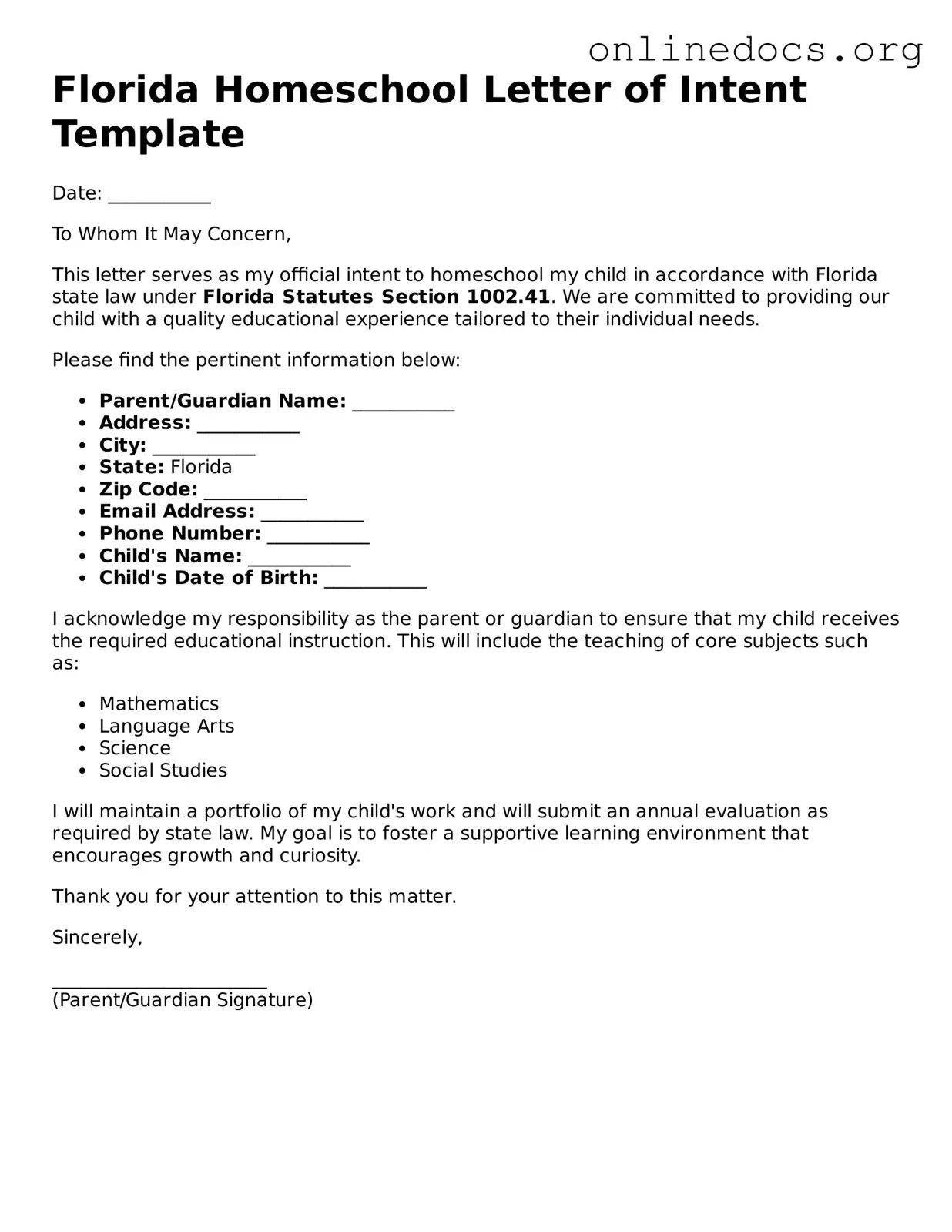The Florida Homeschool Letter of Intent form shares similarities with the Private School Enrollment form. Both documents serve as official notifications to the state regarding the educational status of a child. The Private School Enrollment form is submitted to indicate that a child is enrolled in a private institution, while the Homeschool Letter of Intent indicates that the child will receive education at home. Each document requires the parent's signature and basic information about the child, ensuring that the state maintains accurate records of educational settings.
Another document comparable to the Homeschool Letter of Intent is the Withdrawal Form from Public School. This form is used by parents to formally withdraw their child from a public school. Like the Homeschool Letter of Intent, it is a way to notify the school district and state education authorities of a change in the child's educational status. Both documents require similar identifying information, such as the child's name and date of birth, to ensure that the transition is properly documented.
The IEP (Individualized Education Program) also bears resemblance to the Homeschool Letter of Intent. While the IEP is specifically designed for students with disabilities, it outlines the educational plan tailored to meet the child's unique needs. Parents of children with IEPs may choose to homeschool, and submitting the Homeschool Letter of Intent becomes necessary to inform the state of this choice. Both documents emphasize the importance of educational planning and parental involvement in a child's learning process.
The Affidavit of Intent to Homeschool is another document that closely mirrors the Florida Homeschool Letter of Intent. This affidavit is often required in various states to affirm a parent's decision to educate their child at home. Similar to the Letter of Intent, it serves as a formal declaration of the parent's commitment to provide an education and includes information about the child. Both documents are crucial for complying with state regulations regarding homeschooling.
Understanding the importance of proper documentation in education is vital for parents who choose to homeschool. One such essential form is the Florida Homeschool Letter of Intent, which serves as a formal notification to the state about a child's educational plans. Similarly, the californiapdfforms.com/operating-agreement-form/ can be crucial for those establishing an LLC, as it outlines necessary guidelines and structure, ensuring compliance with legal regulations while protecting personal assets.
The Enrollment Form for Charter Schools is also similar in function. Parents use this form to enroll their child in a charter school, which operates independently of the traditional public school system. Like the Homeschool Letter of Intent, it requires parental input and provides state officials with necessary information about the child's educational environment. Each document plays a role in ensuring that the child's educational journey is documented and recognized by the state.
Lastly, the Certificate of Completion is another document that aligns with the Homeschool Letter of Intent. This certificate is issued upon the successful completion of a homeschooling program, acknowledging that the child has met educational requirements. While the Homeschool Letter of Intent initiates the homeschooling process, the Certificate of Completion signifies its conclusion. Both documents are essential for tracking a child's educational progress and ensuring compliance with state education laws.
